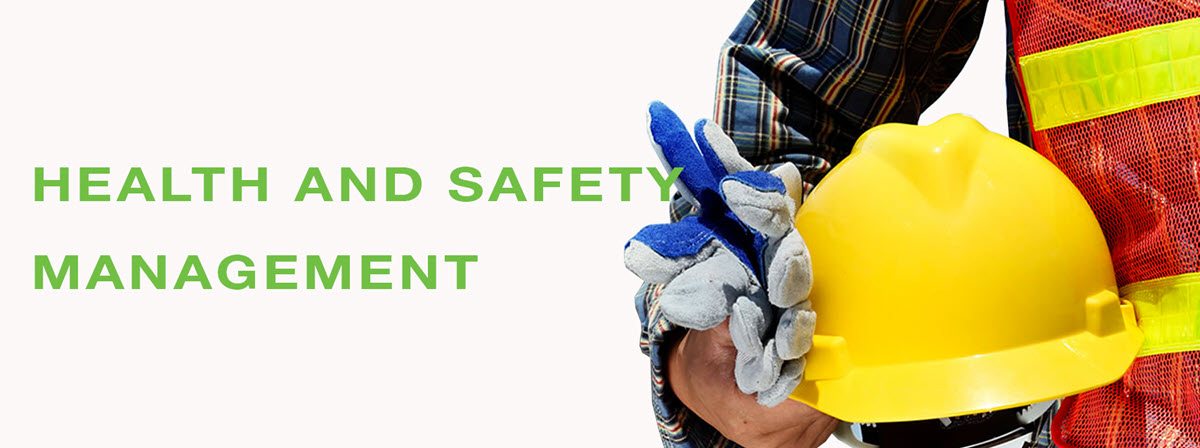About Health and Safety Management System
Health and Safety Management System refers to initiatives that are designed to decrease risks associated with work activities and actions at the worksite. The efficient system will be one that minimises the chances of incidents and illnesses in any organisation. The attitude and scope of the system vary depending on the size and characteristics of the workplace.
Successful implementation of the Health and Safety Management System requires robust leadership and strong management, including appropriate allocation of resources, emergency preparedness, competent and well-trained workforce engaged in an atmosphere of trust.
The key steps for any effective Health and Safety Management System are:
Step 01 – Management and Employees Commitment and Participation
Establishing an effective Health and Safety Management System requires the leadership of the organisation to build, implement, maintain and promote this system. Management should have clear directions to perform actively for the achievement of desired goals.
Basic responsibilities of management are:
- Introducing the health and safety policy at worksites.
- Providing adequate facilities required for implementing a Health and Safety Management System.
- Developing and assigning authorities, responsibilities and accountabilities for the management system at worksites.
- Integrating health and safety into the entire work operations and systems of the organisation
- Promoting health and safety frequent practices within the organisation.
Getting management on board is not enough, involvement of employees in a health and safety culture is also a key element to minimise risk levels. Employees should be encouraged to implement, maintain evaluate and improve health and safety of the organisation.
Following points help employees to comply and understand health and safety management system:
- Provide employees with resources, means necessary and time.
- Provide employees timely information relevant to their work and require them to participate actively in health and safety related programs.
- Employees should be encouraged to report and share health and safety concerns on illness, injuries and hazards amongst other.
Step 02 – Planning a Health and Safety Management System
An effective system is not possible without a proper deal of thought and right planning for delivering on the commitments outlined for health & safety.
By establishing objectives and targets in an organisation, management and employees are working towards the same goal to drive continual improvement. These objectives and targets must focus on specific actions in the organisation to improve health and safety at the workplace.
The main points of planning include:
- Identify hazards, risks and deficiencies at the worksite.
- Record identified problems and implement actions to improve then.
- Set targets that drive improvements and minimises risk.
Step 03 – Implementing and Operating
For solid implementation, an organisation should establish a systematic approach and supporting arrangements to ensure compliance with health and safety policies and achieve objectives and targets. The entire staff including management and employees should be kept motivated and trained to work safely in every operation to minimise risks.
Risk assessment is a basic strategy for health and safety management system to enlist priorities, it fulfills objectives by reducing and eliminating risks. If possible, risks should be eliminated by selection or changing design of processes and equipment. Where complete elimination of a risk is not possible then it should be minimised through applying physical controls and safe systems of work.
Key points for successful implementation and operation are:
- Introducing a training and reporting system within the organisation.
- Employees should be trained timely to analyse and control hazards.
- Periodic inspections.
- Introducing and implementing prevention control measures.
- Preparedness and response in workplace emergencies.
Step 04 – Evaluating and Improving a Health and Safety Management System
Once a Health and Safety Management System gets established and implemented, the management must monitor and evaluate performance continuously to make the system more effective. The efficiency of Health and Safety Management Systems can be estimated by verifying the level of achievement against set objectives and targets of the organisation.
Following are key steps to ensure continual improvement of the management system:
- Monitoring, measuring and analysing the system.
- Conducting various inspections and reporting.
- Adopting corrective actions.
- Update processes based identified improvements and the management review.
Step 05 – Auditing and Management Review
In this step, management review identified serious hazards, hidden risks, system deficiencies, and provides their solution to ensure that all identified issues get solved. To make the management system more efficient, the organisation must constantly follow reviews and take correct measures from time to time for continual improvement of the management system. The strong commitment to continual improvement involves updating policies, procedures and methods to control risks. Further, through relevant experiences, independent audits the organisation can learn and apply the right measures accordingly.
Management reviews are based on following characteristics:
- Status of progress and trends towards minimising risk.
- Effectiveness of actions to find and prioritise risks, and system deficiency.
- Effectiveness of actions intended to solve deficiencies in the management system and underlying causes of risks.
- Input from management and employees.
- Continues actions on corrective and preventive measures based on audit and the previous management review.
After auditing and management review, the Senior Management creates a summary to enlist top commitments and lineup actions that require employees responsible for completing tasks and targets. The periodically update and sharing status results of these actions to make the Health and Safety Management System perform effectively.
If you are looking to implement an ISO 45001 compliant H&S Management System, then contact us for a free consultation on how we can support with your project.





















